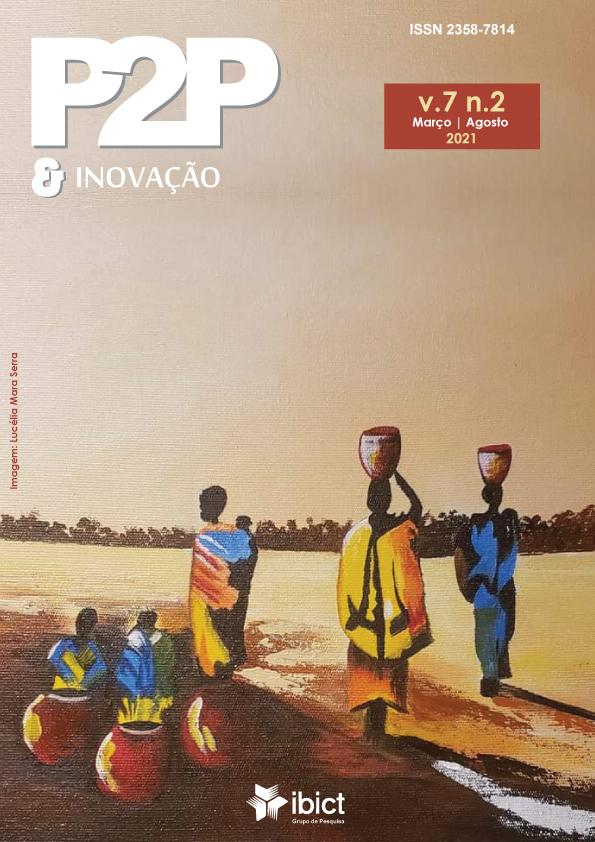Innovation environment
a conceptual analysis of the elements that characterize the innovative environment
DOI:
https://doi.org/10.21721/p2p.2021v7n2.p207-220Keywords:
Innovation, Innovation Environment, ManagementAbstract
Innovation has become strategic for organizations to maintain their competitiveness. It has become essential to understand innovation and the environment in which it occurs in order to replicate it. The present study aimed to understand the ideal environment for the development of innovation and the elements that characterize it. To this end, a bibliographic research was carried out where relevant studies on the subject were surveyed and the main concepts elaborated by different scholars were analyzed. After analyzing these, a table was formed to visualize the key ideas on the subject. It was possible to identify that management is responsible for stimulating the innovation process, purposefully developing an innovative environment and establishing a culture for innovation. It was concluded that the ideal environment for the development of innovation is one in which there is an innovation management and that the main elements that characterize the innovative environment are the stimulus and motivation as well as the innovation culture. The study does not exhaust the subject, but it contributes knowledge that can help in the promotion of an innovative environment and thus promote competitiveness in organizations.
Downloads
References
ALENCAR, Eunice M. L. Soriano de. A gerência da criatividade. São Paulo: Makron Books, 1996.
BARBIERI, J. C. et al. Organizações inovadoras: estudos e casos brasileiros.2 ed. Rio de Janeiro: FGV, 2003.
COUTINHO, Luciano. A terceira revolução industrial e Tecnológica: As Grandes Tendenciais de Mudança. Campinas, São Paulo, Economia e sociedade: revista do Instituto de Economia da UNICAMP, v. 1, p. 69-87, 1992.
FONSECA, J. J. S. Metodologia da pesquisa científica. Fortaleza: UEC, 2002. Apostila.
FÓRUM DE INOVAÇÃO - FGV - EAESP. Campos de conhecimento. Brasil, 2000. Disponível em: https://inovforum.fgv.br/campo-de-conhecimento/. Acesso em: 10 nov. 2017.
GUNDLING, E. The 3M Way to innovation: balancing people and profit. Vintage Books; NY, 1999.
JONASH, R. S.; SOMMERLATTE, T. O valor da inovação: (theinnovationpremium) como as empresas mais avançadas atingem alto desempenho e lucratividade. Rio de Janeiro: Campus, 2001.
KING, N.; ANDERSON, N.R. Managing Innovation and Change: a critical guide for organization. London: Thompson Learning, 2002.
KNOX, S. The boardroom agenda: developing the innovative organization. Corporate Governance, Bradford, UK, v. 2, n.1, p.27-36, jan./fev. 2002.
KOTLER, P.; ARMSTRONG, G. Introdução ao marketing. 4. ed. Rio de Janeiro: LTC, 2000.
KOTLER, P.; KANTAJAYA, H., SETIAWAN, I. Marketing 3.0: As forças que estão definindo o novo marketing centrado no ser humano. Rio de Janeiro: Elsiever, 2010.
LEITE, L.F. Inovação: o combustível do futuro. Rio de Janeiro: Qualitimark, 2005.
MACHADO, Denise Del Pra Netto; MORAES, Edmilson. Rompendo a estagnação em uma indústria madura: Um estudo de caso sobre uma inovação radical. In: ENCONTRO NACIONAL DOS PROGRAMAS DE PÓSGRADUAÇÃO EM ADMINISTRAÇÃO, 26., 2002, Salvador/Bahia. Anais [...]. Salvador: ENANPAD, 2002.
MACHADO, Denise Del Pra Netto; VASCONCELLOS, Marcos Augusto de. Organizações inovadoras: existe uma cultura específica que faz parte deste ambiente?. REGE Revista de Gestão, São Paulo, v. 14, n. 4, p. 15-31, dez. 2007. Disponível em: http://www.revistas.usp.br/rege/article/view/36611. Acesso em: 13 abr. 2018.
MACIEL, M. L. Inovação e conhecimento. In: SOBRAL, F. et al. (orgs.). A alavanca de Arquimedes: ciência e tecnologia na virada do século. Brasília: Paralelo 15, 1997.
MARTINS, E.; MARTINS, N. An organizational culture model to promote creativity and innovation. Journalof Industrial Psychology, v. 28, n. 4, p. 58-65, 2002.
MINAYO, M. C. S.; MINAYO-GOMÉZ, C. Difíceis e possíveis relações entre métodos quantitativos e qualitativos nos estudos de problemas de saúde. In: GOLDENBERG, P.; MARSIGLIA, R. M. G.; GOMES, M. H. A. (orgs.). O clássico e o novo: tendências, objetos e abordagens em ciências sociais e saúde. Rio de Janeiro: Fiocruz, 2003. p.117-42.
MOTTA, Paulo Roberto. Diagnóstico e Inovação Organizacional. In: Planejamento organizacional: dimensões sistêmico-gerenciais. Porto Alegre: Fundação para o Desenvolvimento de RH, 1979.
OCDE - Organização para Cooperação e Desenvolvimento Econômico. Manual de Oslo. OCDE, 2005.
RESE, A.; BAIER, D. Success factors for innovation management in networks of small and medium enterprises. R&D Management, v. 41, p. 138–155, 2011.
SCHUMPETER, J. Teoria do desenvolvimento econômico: Os Economistas. 2. ed. São Paulo: Nova Cultural, 1985.
SORALUCE, S. A. M. P. Estimular o Talento. HSM Management, v. 26, maio/jun. 2001.
TEIXEIRA, M. A. M. F. As marcas em tempo de crise. Dissertação (Mestrado em Marketing) - Universidade Católica Portuguesa, 2015.
THAMHAIN, H.J. Managing innovative R&D teams. R&D Management, v.33, n.3, p.297-311, 2003.
TUSHMAN, M., ANDERSON, P., O'REILLY, C.A. Technology cycles, innovation streams, and ambidextrous organizations: organizational renewal through innovation streams and strategic change. In: TUSHMAN, M.; ANDERSON, P. (eds.). Managing Strategic Innovation and change. Oxford: Oxford University Press, 1997. p.3-23.
TIDD, J.; BESSANT, J.; PAVITT, K. Managing innovation integrating technological, market and organizational change. New York: John Wiley & Sons, 1997.
VAN DE VEN, A. H.; ANGLE, H. L.; POOLE, M. S. Research on the Management of Innovation: the Minnesota studies. Oxford: Oxford University Press, 2000.
VAN DE VEN, A. H.; CHU, Y. A. psychometric assessment of the Minnesota innovation survey. In: VAN DE VEN, A .H; POOLE, M. S.(eds.). Research on the management of innovation. The Minnesota Studies, New York: Ballinger/Harper & Row, 1989.
Downloads
Published
Issue
Section
License
The journal is published under the Creative Commons - Attribution - Noncommercial - Share Alike 3.0 Brazil.
The published work is considered collaboration and therefore the author will not receive any remuneration for this as well as anything will be charged in exchange for publication.
All texts are responsibility of the authors.
It’s allowed partial or total reproduction of the texts of the magazine since the source is cited.














